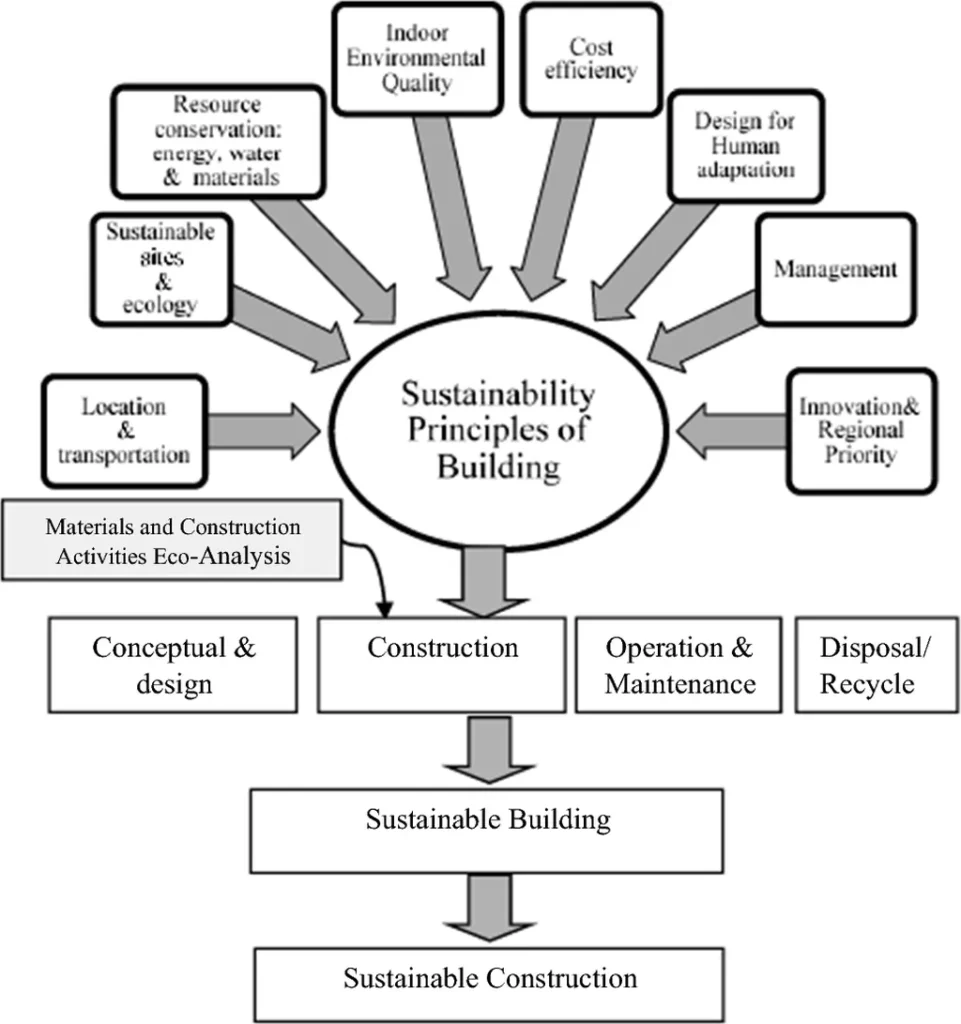In the quest to make the construction industry more sustainable, a groundbreaking study led by Omnia Osama from Cairo University’s Integrated Engineering Design Management Program is paving the way for more informed decision-making. Published in ‘Case Studies in Construction Materials’ (translated as ‘دراسات حالة في مواد البناء’), this research offers a robust framework for selecting building materials that significantly reduce environmental impact, a critical factor for the energy sector and beyond.
The construction industry is a major contributor to environmental degradation, and addressing this challenge requires innovative solutions. Osama’s research develops a comprehensive methodology for evaluating and selecting sustainable building materials, focusing on minimizing greenhouse gas emissions and resource consumption. The study is structured into three key stages: identifying sustainability criteria, simulating sustainability behavior, and selecting sustainable strategies.
Osama and her team began by identifying 27 sustainability parameters through an extensive review of literature and rating systems. These parameters were evaluated using a structured questionnaire distributed to 70 construction experts, applying a 5-point Likert scale. Statistical analyses, including Confirmatory Factor Analysis (CFA) and factor loading, were used to assess reliability and validity, resulting in the elimination of 11 parameters and the identification of 16 key criteria.
The second stage of the research involves developing a System Dynamics (SD) model to simulate the performance of building material alternatives against selected sustainability criteria. The model evaluates materials based on five key criteria: carbon emissions, energy savings, material cost, resource-use efficiency, and waste reduction. These criteria align with Sustainable Development Goals (SDG) 9 and SDG 12.
In the final stage, the Best-Worst Method (BWM) and the Technique for Order Preference by Similarity to Ideal Solution (TOPSIS) are integrated to prioritize and select the most suitable sustainable material strategy. The study evaluates five alternative material scenarios in comparison to a base case. As part of this process, a sustainability guide is developed, outlining the sustainability scores associated with each material alternative.
Among the five scenarios, Scenario 3 emerges as the most sustainable option. This scenario comprises the use of reused steel, rapidly renewable wood, prefabricated gypsum board, and cast-in-place concrete. This combination achieves the highest overall sustainability score, demonstrating strong potential for supporting climate-conscious construction practices.
The framework is validated through a case study of a healthcare facility in Suez, Egypt, demonstrating its applicability for real-world decision-making in sustainable construction practices. “This research provides a practical tool for construction professionals to make informed decisions about sustainable materials,” says Osama. “By integrating system dynamics modeling and decision-making techniques, we can significantly reduce the environmental impact of the construction industry.”
The implications of this research are far-reaching, particularly for the energy sector. As the demand for energy-efficient buildings grows, the need for sustainable materials becomes increasingly critical. Osama’s framework offers a valuable tool for developers and architects to make informed decisions that align with sustainability goals and regulatory requirements.
Moreover, the study highlights the importance of integrating sustainability criteria into the early stages of the design process. By doing so, construction professionals can identify the most sustainable materials and strategies, ultimately reducing the environmental impact of their projects.
As the construction industry continues to evolve, the need for sustainable practices becomes increasingly urgent. Osama’s research offers a promising solution, providing a robust framework for evaluating and selecting sustainable building materials. By adopting this approach, construction professionals can contribute to a more sustainable future, supporting climate change mitigation and resource conservation.
In the words of Osama, “The future of construction lies in sustainability. By making informed decisions about materials and strategies, we can build a better, greener world.” This research is a significant step in that direction, offering a practical tool for achieving sustainability goals in the construction industry.

